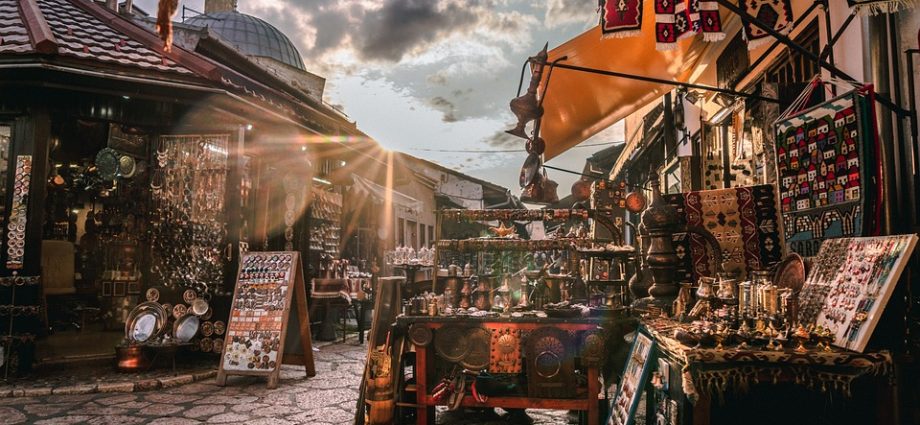Discovering Sarajevo: A City of Contrasts and Resilience
Nestled in the valleys of the Dinaric Alps, Sarajevo is the capital city of Bosnia and Herzegovina, known for its rich history, cultural diversity, and a thriving food scene. The city bears the scars of a troubled past but has come out stronger with its resilient citizens and a thriving culture.
Over the years, the city has welcomed visitors from all over the world, seeking to learn and discover more about this unique city’s history and culture. In this article, we will explore the city’s top attractions, its contrasting character, and its storied history.
A City of Contrasts
Sarajevo is a city that blends East and West effortlessly; you can see it in the architecture, the restaurants, the shops, the people’s faces, and even the languages spoken in the streets. The city has a unique charm that is undeniable and something that you should experience yourself.
One of the things that you will notice when walking around Sarajevo is the many contrasts. It’s a city that juxtaposes new and modern buildings with old and aging ones, bustling streets with quiet alleyways, and local markets with high-end stores. Sarajevo reflects a diverse city’s spirit, where different cultures and people come together to create something unique.
Despite the many contrasts, Sarajevo has an undeniable sense of unity. The people here have seen and survived so much, and that collective resilience is reflected in the city’s many initiatives and public spaces.
A City of Resilience
Sarajevo is a city that has seen its share of pain and suffering, but the people here have persisted and thrived through it all. From the siege of 1992 to the more recent floods and landslides, Sarajevans have demonstrated what resilience means in the face of adversity.
One of the most significant signs of Sarajevo’s resilience is the city’s “Red Line.” The line is a series of painted red footsteps that mark the line of fire during the siege by the Bosnian Serbs. Many of the city’s buildings and landmarks were destroyed during this time, but the Red Line serves to remind residents and visitors alike of the city’s resilience and the struggle that the people here endured.
The city’s resilience is also reflected in its many cultural institutions and initiatives, which offer free concerts, performances, and exhibits throughout the year. These events range from classical music concerts in the national theater to outdoor movie screenings in the city center.
Top 5 Tourist Attractions in Sarajevo
1. Baščaršija – The heart of the city, Baščaršija is a traditional Ottoman marketplace that has been a hub of commerce in Sarajevo since the 15th century.
2. Tunnel of Hope – The tunnel served as a lifeline during the Siege of Sarajevo in the early 1990s. Visitors can walk through a portion of the tunnel and learn about the history of the siege.
3. Latin Bridge – The bridge is the site where Archduke Franz Ferdinand and his wife were assassinated, an event that triggered the start of World War I.
4. Yellow Fort – A hilltop fortress that offers panoramic views of the city and the surrounding mountains.
5. Gazi Husrev-beg Mosque – One of the city’s most recognizable landmarks, the mosque was built in the 16th century and is one of the finest examples of Islamic architecture in the region.
Frequently Asked Questions (FAQs)
1. When is the best time to visit Sarajevo?
Sarajevo is a year-round destination, but the best time to visit is during the autumn and spring when the temperatures are mild, and the crowds are fewer.
2. How do I get around Sarajevo?
Sarajevo has an extensive public transportation system that includes trams, buses, and trolleybuses. Taxis are also readily available, but be sure to negotiate the fare before getting in.
3. Is Sarajevo safe for tourists?
Sarajevo is generally a safe city, but it’s always best to exercise caution and be aware of your surroundings while exploring.
4. Is English widely spoken in Sarajevo?
While Bosnian is the official language in Sarajevo, many people speak English, especially in the tourist areas.
5. What local foods should I try in Sarajevo?
Some of the most popular dishes in Sarajevo include cevapi (grilled meat served with bread), burek (a pastry filled with meat, cheese, or spinach), and baklava (a sweet pastry filled with nuts and honey).
In conclusion, Sarajevo is a city that is filled with contrasts, history, and resilience. The city has overcome many challenges in the past, and its people have emerged stronger and more united. Therefore, if you’re looking for a destination that has something for everyone, then Sarajevo is undoubtedly worth visiting. You won’t be disappointed.
